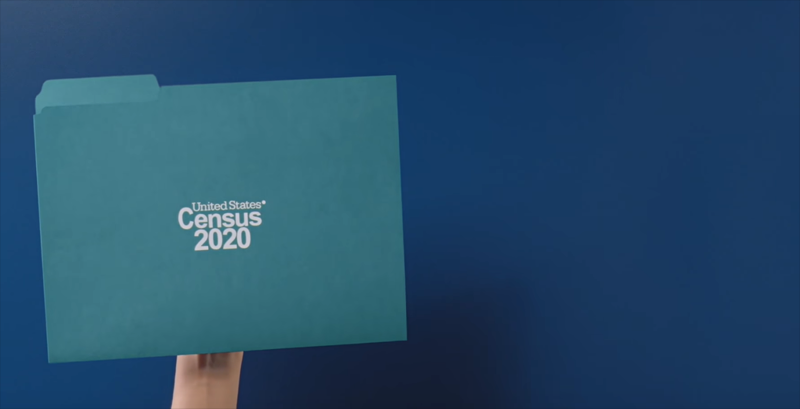With the ongoing trauma that is the COVID-19 pandemic, the resurgence in the fight for racial equality and justice, and all of life’s regular challenges, it’s easy to forget that 2020 is a census year. The census is a constitutionally mandated counting of all human bodies in the United States (and U.S. territories, because yes, we still have those) every ten years.
The census is important because it informs how representation in Congress is allocated. Congressional districts are drawn based on population and demographics, and if there are significant changes in population, districts are created, dissolved, and redrawn. It’s estimated that Illinois will lose districts when the maps are redrawn after this count, meaning we will have fewer voices in the House of Representatives. As a community largely unsupported by our own representative, Rodney Davis, we know the importance of ensuring that we count and that our voices are heard.
Census data is public, and all sorts of institutions and entities — including academic researchers, businesses, and nonprofits — use that information for a variety of reasons. Perhaps most importantly, it’s vital to have an accurate count so that our community can receive the financial resources it needs, especially as we try to move through the COVID-19 pandemic and enact meaningful changes toward building a just and inclusive community. The federal government will distribute at least $675,000,000,000 — that’s 675 billion dollars — and with economic uncertainty compounded by a global pandemic and a recession, we need as much as we can get. That money is used to fund infrastructure projects, libraries, social services like C-U Public Health Department, and schools.
According to our March interview with Urbana Mayor Diane Wolfe Marlin, Northeast Central Illinois Regional Intermediary for the 2020 Census Linda Steinberg, and Associate Planner for the City of Champaign Tina-Marie Ansong, Champaign County was undercounted by 40,000 people during the 2010 census, resulting in a financial loss of approximately $560 million.
The census takes account of where you live(d) on April 1st. Normally, of course, C-U would have about 50,000 more people, but with the COVID-19 crisis, almost all U of I and Parkland students were home and not on campus. This shouldn’t be a problem for us here in C-U; the Census Bureau indicated that students should be counted where there would have normally been on April 1st, and is working to cross check that data with information provided by colleges and universities.
So what are the response rates here in Illinois and C-U? As of July 15th, Illinois’ self-response rate was 66.9%; Champaign County was 64.6%. (By comparison, the national response rate is 62.1%.) This seems high, but there are still 1/3 of our neighbors who have not responded.
Here’s the breakdown of some response rates locally:
- IL District 13 66.1%
- Champaign 60.6%
- Urbana 62.6%
- Rantoul 60.1%
Most of these responses were submitted online. In March, households were mailed letters with personalized codes to access the census survey; it’s really short, and you can see the questions ahead of time. You will not be asked about your citizenship, and any personal information you share is safe, as required by law:
Your responses to the 2020 Census are safe, secure, and protected by federal law. Your answers can only be used to produce statistics—they cannot be used against you in any way. By law, all responses to U.S. Census Bureau household and business surveys are kept completely confidential.
You can still complete the questionnaire online, even if you didn’t save those postcards or code. To do so, visit this website.
Census Bureau door knockers will begin canvassing the community in the next couple of weeks. In this COVID-19 moment, it’s safest to submit your survey online, by phone, or via mail. Doing so minimizes the number of households door knockers will need to visit, helping to mitigate exposure to and spread of COVID-19, and also potentially prevent any unnecessary anxiety related to apparent representatives of the United States government knocking on doors unexpectedly. It’s worth repeating here that census workers are people who live in our community and are only there to count the number of people in your household. They are not law enforcement officers. They will be easily identifiable. Likewise, census workers are required to follow public health guidelines and wear masks.
If you’ve already completed your survey, and are interested in finding ways to encourage others, consider reaching out to people in your circles who might be skeptical of completing theirs, or have encountered difficulties accessing the internet. The census is available in many languages; if you are in a community with non-English speakers and can assist, we encourage you to do so.
Finally, if you’re a census nerd, or are interested in keeping up with how this year’s census is playing out, follow Hansi Lo Wang, a reporter at NPR, on Twitter. His reporting is incredibly thorough, and served as a source for much of this article.
The Editorial Board is Seth Fein, Jessica Hammie, Julie McClure, Patrick Singer.








